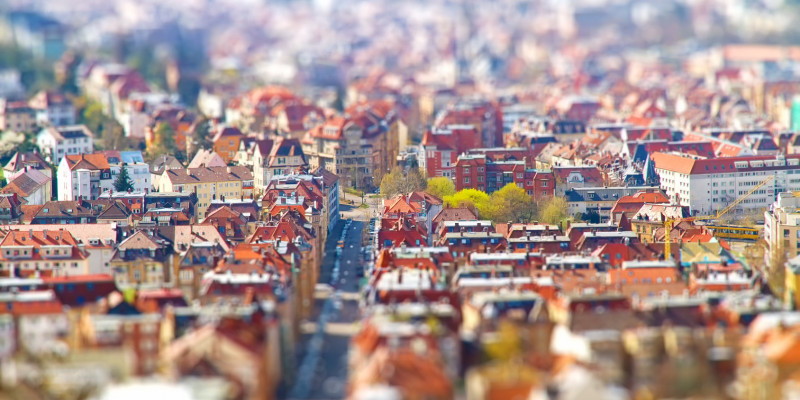The UBA research agenda “Urban environmental protection”
 Click to enlarge
Click to enlargeSource: Jürgen Flächle / Fotolia.com
 Umweltbundesamt
Umweltbundesamt
 Click to enlarge
Click to enlargeUrban environmental protection is a cross-sectional task in the German Environment Agency (UBA). In its strategic Research Agenda, the UBA identifies focal points for future research towards the development of settlement areas in accordance with environmental quality goals. The Agenda also highlights gaps in our knowledge about environmentally oriented, socially acceptable and health promoting urban development. New causal relationships will be identified and addressed by means of interdisciplinary approaches. Urban environmental protection includes, above all, an examination of the interaction between ecological, social and economic aspects. For example, climate protection and adaptation, air pollution control, noise reduction, resource conservation, reduction of land use and other topics are to be brought together, thus linking urban development and environmental protection even more closely.
The UBA research agenda focuses on topics which are of particular relevance for the development of urban spaces from an environmental perspective in view of the current conditions, trends, and challenges. In particular it raises issues for which an interdisciplinary approach promises to offer added benefits. Many of the proposals and findings can only be implemented through the combined efforts of various actors and specialist disciplines. Close cooperation is therefore essential with research institutions, authorities, municipal actors, associations and networks, civil-society organisations, and other multipliers.
The research agenda focuses on implementation. This can only succeed if existing knowledge and new findings are linked with each other and if research results are communicated in a targeted manner. In 2017, UBA has already published a vision for "Tomorrow’s Cities". It shows that synergies between different environmental aspects (land use, air, noise, etc.) and urban development are fully exploited with a motorisation level of less than 150 cars per 1,000 inhabitants in cities with more than 100.000 inhabitants. With an average of currently around 450 cars per 1,000 inhabitants in large cities, we are still a long way from that [as of 01.01.2017; Berlin: 334 cars / 1,000 inhabitants]. So there is still a lot to do here - possible ways are to be explored with the research agenda Urban Environmental Protection and the Vision for "Tomorrow’s Cities" should be extended step by step to the topics of the UBA Research Agenda.
As part of the research focus "Urban Environmental Protection", various projects and activities have already been started. Among other, projects are concerned with the efficient and sustainable use of natural resources in urban areas. Especially the construction sector causes huge material flows, which in turn claim the natural resources and the environment. Resource consumption in cities is also of high importance globally. The immense demand for raw materials in urban areas represents a central global environmental problem. A problem that has not yet been tackled.
With other projects, the concept of the "compact city" will be critically scrutinized. From an environmental point of view, is this approach useful for dense regions such as Munich, Leipzig or Hamburg? Can our drinking water and sewage, transport and energy supply infrastructures even cope with more compact cities? Or do we have to go other ways because of bottlenecks in infrastructure?
Further activities are also devoted to climate adaptation in urban areas. Infrastructures and buildings must be adapted to changing environmental conditions. But up to 95 percent of German cities with their buildings and infrastructures are already built. For this reason, scope for action usually opens up when renovation is pending. When rehabilitating, however, not only the adaptation to climate change should be taken into account - for example, green roofs - but also the question of what can be achieved for climate protection and resource efficiency through buildings in their entirety.
In addition, there are numerous other projects which deal, among other issues, with the environmental effects of smart cities, interfaces between infrastructure and urban planning, the environmental effects of demographic change in cities and rural areas, the environmental effects of increasing urban tourism, noise reduction in urban, mixed-used areas or environmental justice
The Agenda will be reviewed, updated and extended at intervals of five to ten years, in order to be able to react to the dynamic changes in urban settlement areas and newly emerging environmental issues.